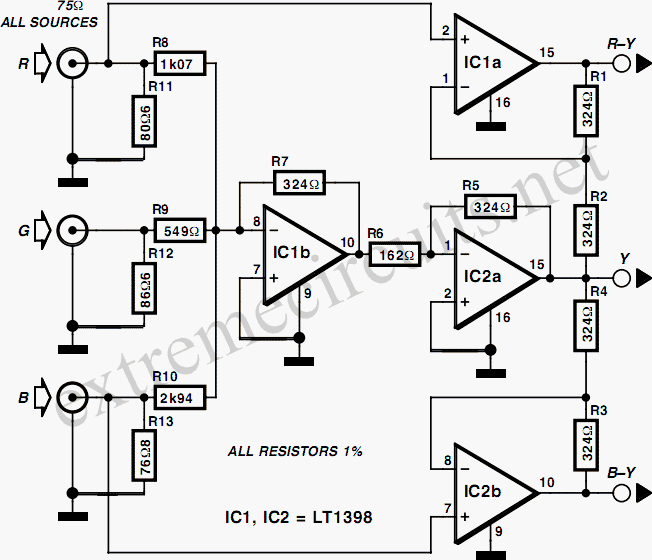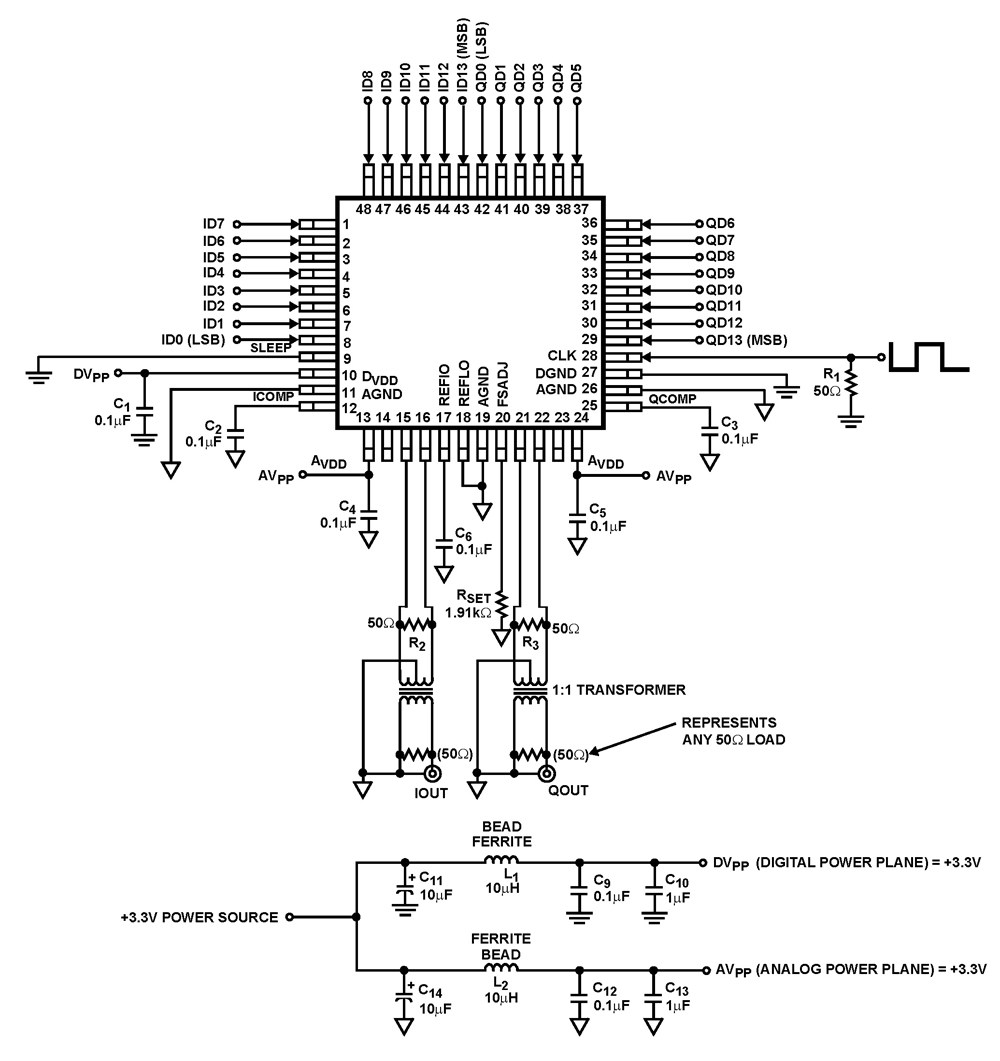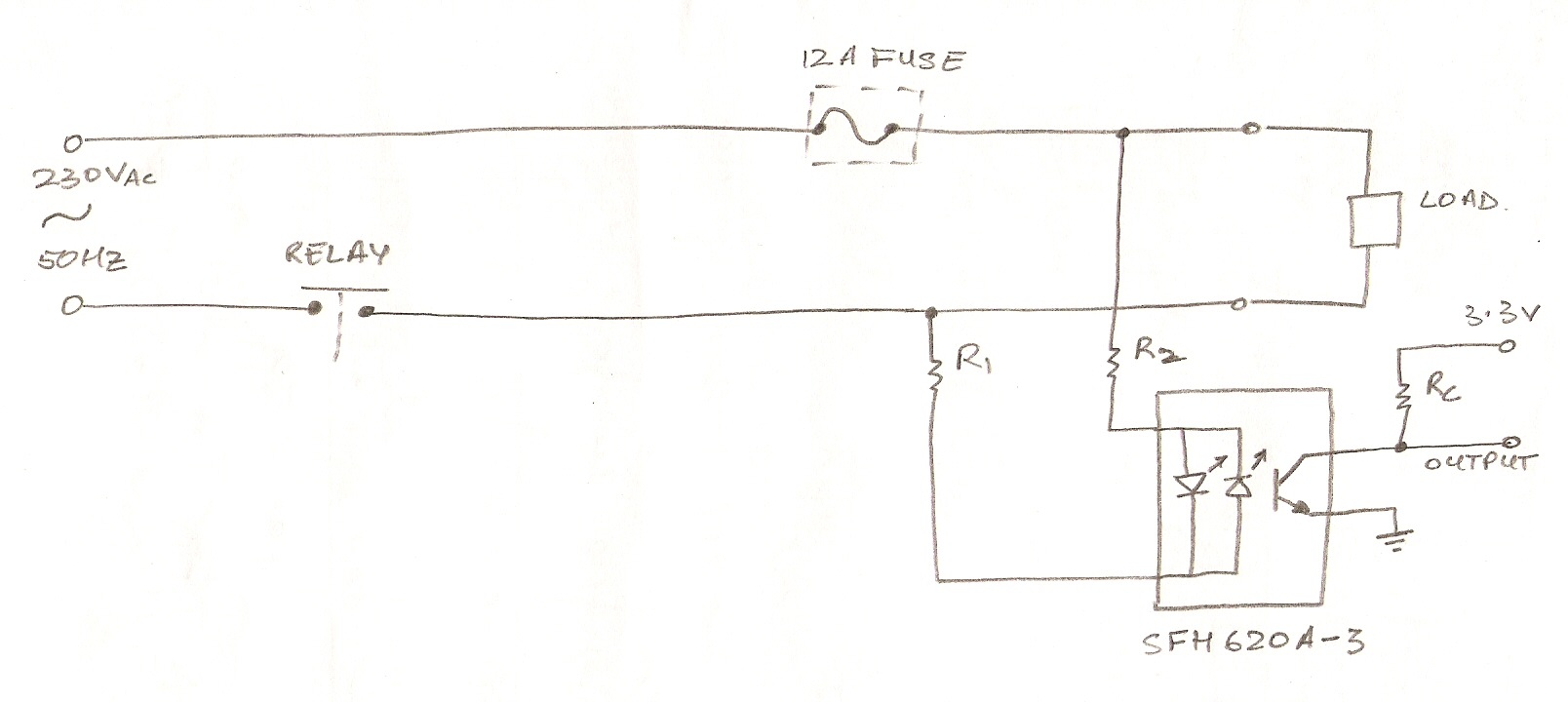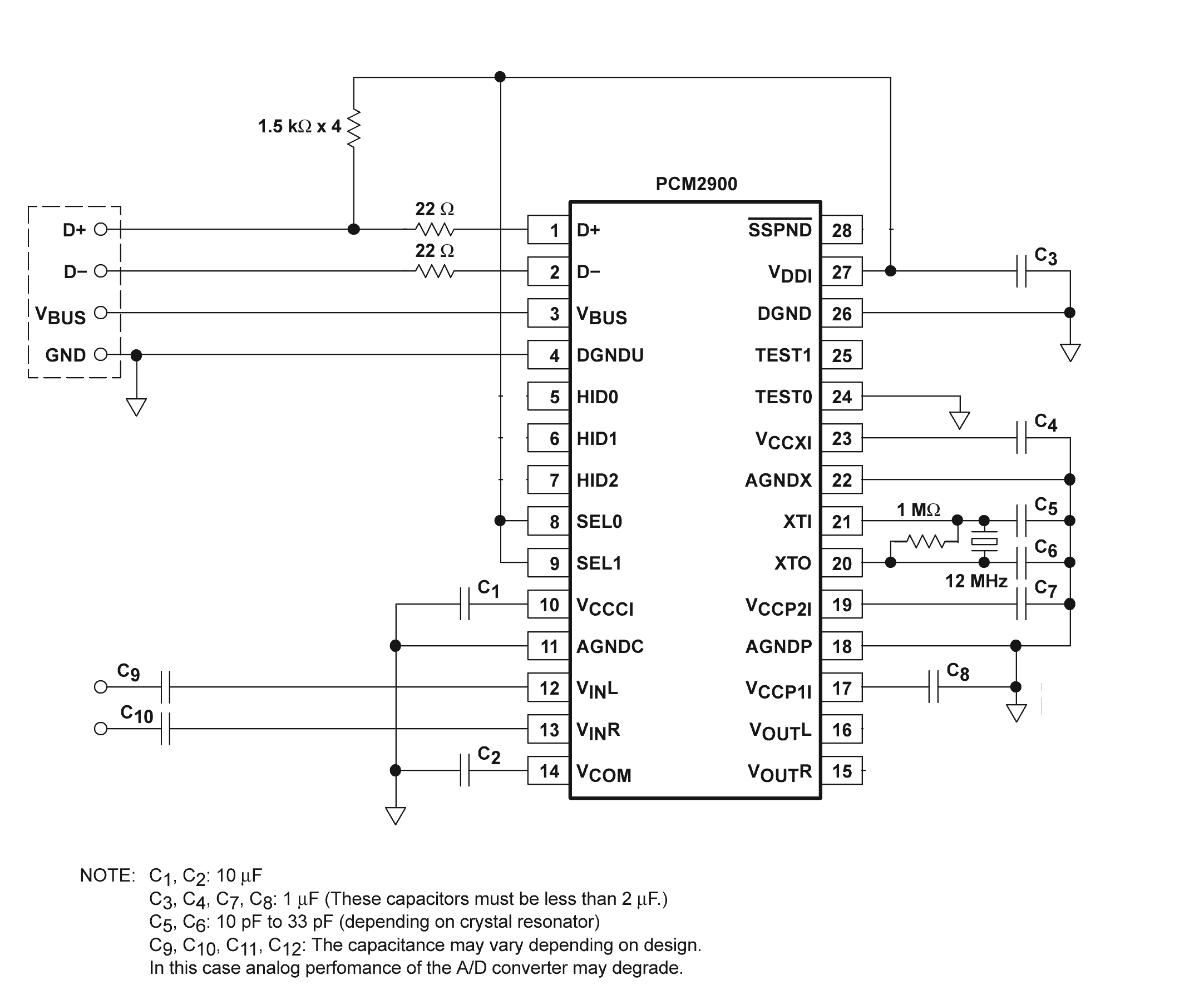
Voltage-To-Frequency Converter With Optocoupler
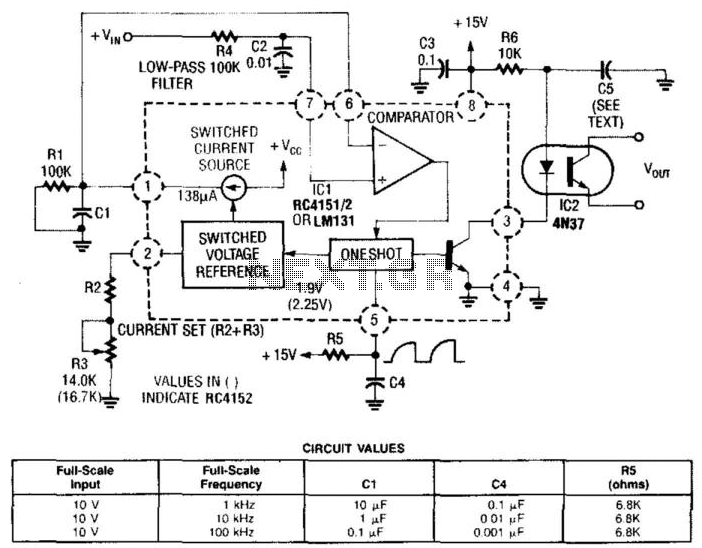
In this circuit, a Raytheon RC4151 or National LM131 is utilized alongside an optocoupler for applications where input-to-output isolation is desirable. Circuit values are indicated in the figure for various applications.
The circuit employs a Raytheon RC4151 or National LM131, both of which are precision voltage references known for their stability and low drift characteristics. These components are integrated with an optocoupler to ensure electrical isolation between the input and output, which is crucial in preventing ground loops and protecting sensitive components from voltage spikes or noise that may be present in the input signal.
The optocoupler serves as a crucial interface that transmits signals while maintaining isolation. It typically consists of a light-emitting diode (LED) and a photodetector, such as a photodiode or phototransistor, housed within a single package. When an input voltage is applied to the LED, it emits light, which is detected by the photodetector on the output side, thus transferring the signal without a direct electrical connection.
The circuit values, which are specified in the accompanying figure, can vary depending on the specific application requirements, such as the desired input and output voltage levels, current ratings, and response times. These parameters must be carefully selected to optimize the performance of the circuit while ensuring reliable operation under varying conditions.
In applications where isolation is paramount, such as in industrial control systems, medical devices, or communication equipment, this configuration provides an effective solution. It allows for the safe transmission of signals across different voltage domains, ensuring that the integrity of the sensitive output circuitry is maintained. In this circuit, a Raytheon RC4151 or National LM131 is used in conjunction with an optocou pler for applications where input-to-output isolation is desirable. Circuit values are shown in the figure for various applications.
The circuit employs a Raytheon RC4151 or National LM131, both of which are precision voltage references known for their stability and low drift characteristics. These components are integrated with an optocoupler to ensure electrical isolation between the input and output, which is crucial in preventing ground loops and protecting sensitive components from voltage spikes or noise that may be present in the input signal.
The optocoupler serves as a crucial interface that transmits signals while maintaining isolation. It typically consists of a light-emitting diode (LED) and a photodetector, such as a photodiode or phototransistor, housed within a single package. When an input voltage is applied to the LED, it emits light, which is detected by the photodetector on the output side, thus transferring the signal without a direct electrical connection.
The circuit values, which are specified in the accompanying figure, can vary depending on the specific application requirements, such as the desired input and output voltage levels, current ratings, and response times. These parameters must be carefully selected to optimize the performance of the circuit while ensuring reliable operation under varying conditions.
In applications where isolation is paramount, such as in industrial control systems, medical devices, or communication equipment, this configuration provides an effective solution. It allows for the safe transmission of signals across different voltage domains, ensuring that the integrity of the sensitive output circuitry is maintained. In this circuit, a Raytheon RC4151 or National LM131 is used in conjunction with an optocou pler for applications where input-to-output isolation is desirable. Circuit values are shown in the figure for various applications.

